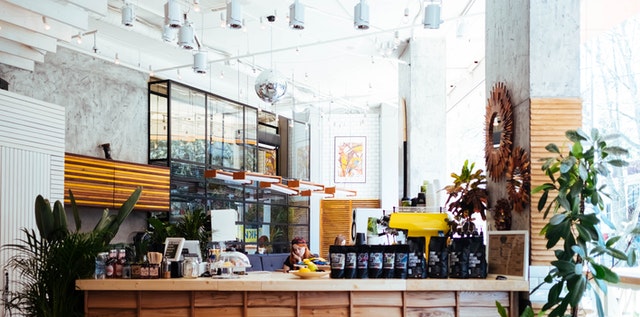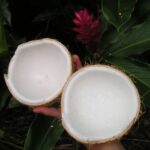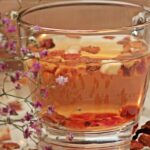You may not be familiar with them, but kava bars are popping up in several states all over America. In this post, we will show you what you will typically find at a kava bar, but you will also learn the main facts about this natural remedy.
What Is Kava?
Kava (or kava kava) is a crop in the pepper family native to the Pacific Islands. Its botanical name is Piper methysticum. For many centuries, kava has been part of the traditional culture in Hawaii, Fiji, Tonga or Vanuatu. Actually, in these places, kava is still a very important element in their social, cultural, and religious life. In fact, if you travel to Fiji or Hawaii, for instance, you may have the opportunity to attend a kava ceremony, as today kava ceremonies are a tourist attraction in many places. But in the Pacific Islands, kava is also part of the traditional medicine and people use it to relax or to combat insomnia.
Properties and Effects of Kava
Kava kava’s active compounds are kavalactones and kavapyrones, which are found on the plant’s roots. These compounds have mild psychoactive properties. But don’t let this fact scare you away: kava is not addictive and does not interfere with your intellectual or motor activities.
But what do kavalactones and kavapyrones do? These are the actions they perform:
- Activate GABA A receptors
- Act on the CB1 receptor
- Inhibit the MAO-B platelet
- Block norepinephrine reuptake
- Inhibit sodium and calcium channels
These actions may not be so easy to understand, but thanks to them kava has anxiolytic effects and is a great natural alternative to treat anxiety. It will also help you relax and fight stress and has euphoric properties that promote a good mood. Furthermore, kava kava also has analgesic and anticonvulsant effects and can relieve insomnia (especially in cases of anxiety).
What Are Kava Bars Like?
Kava promotes a happy mood and allows people to relax. Maybe that’s why it is so important in the social life of the Pacific Islands, where you can easily find kava bars. In fact, we can find the origins of today’s kava bars in these islands.
But kava bars are now also gaining popularity in America. They are very popular in Florida, California, New York, North Carolina, and Hawaii. But you can also find them in other states, such as Oregon, Texas, Missouri, and a few more.
Very often, the decoration in kava bars is very much inspired in the Pacifica Islands where kava is so popular. Also, kava is usually served in a coconut shell, so the experience feels more genuine.
In kava bars, people can gather together before a kava drink and enjoy a good time. Kava enhances your mood, helps you relax, and makes you feel happier. Many people have found out that kava is a healthier alternative to alcohol that helps them chill out and be more talkative without the risk of a hideous hangover the following morning. Also, because kava and alcohol don’t mix well, kava bars usually don’t serve alcohol. Nonetheless, at most kava bars you will also find snacks, coffee, and even other botanical teas.
At a kava bar, you can find traditional kava drinks or kava mixed with juices, coconut water or other ingredients that mask kava flavor. Kava doesn’t taste good; it has an earthy flavor and its texture is not nice either. Many kava users compare this drink to muddy water, so people often mix it with other elements to make it taste better.
Does Kava Have Side Effects?
Yes, kava kava has side effects. Common side effects of kava include:
- Drowsiness
- Stomach upset
- Headaches and migraines
- Visual issues
Prolonged use of kava could potentially lead to more serious side effects and consequences for your health, such as:
- Kava dermopathy (a skin rash that occurs after long-term use of kava)
- Decrease of protein levels
- Apathy and loss of motivation
- Appetite loss and malnutrition
- Blood platelets alteration
- Liver damage
Sometimes kava has been associated with liver damage, so if you have any liver condition, please avoid kava.
On the other hand, due to its actions on the brain and the nervous system, kava can also interact with anxiolytics and antidepressants. Therefore, if you are using these types of medications you should not consume kava.
How Can I Prepare Kava?
You don’t need to go to a kava bar to take kava. The good news is that you can find kava supplements and kava powder very easily. So, if you want to prepare your own kava tea at home you can do it.
In order to prepare a traditional kava drink, you will need to heat 8-10 oz of water. When the water is hot, put a strainer (you can use a muslin bag or a cheesecloth) in a big cup or a bowl. Add the kava powder (2-3 spoons per serving) in the strainer, pour the water and squeeze (you can let it sit for 10 minutes, so the mix won’t be so hot). Then, add the kava powder that remains in the strainer to the kava drink you have just made and repeat the operation.
You can drink your kava tea at room temperature, warm, or add ice cubes to it. Additionally, you can also add coconut water or other juices to make the beverage nicer.



